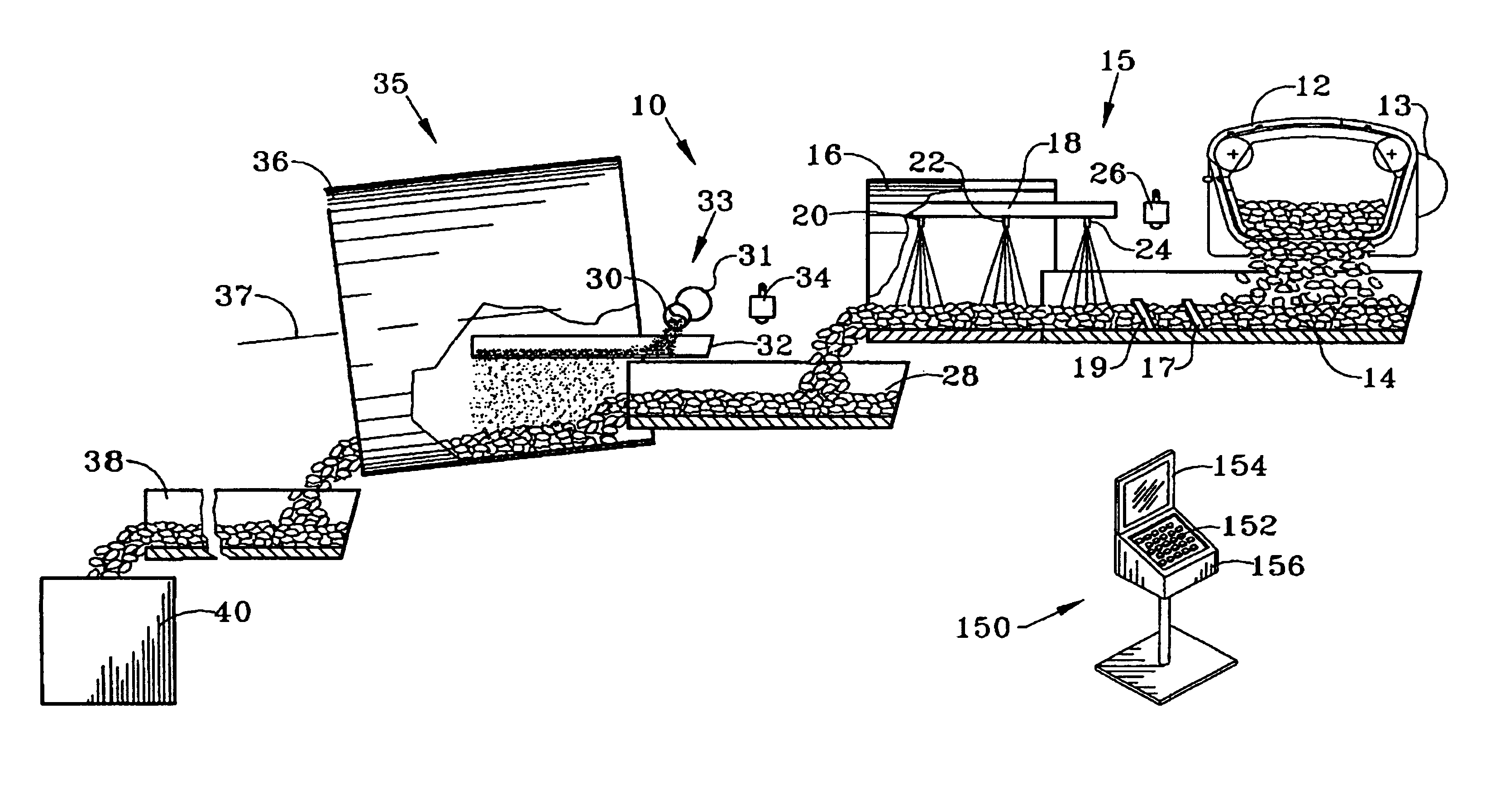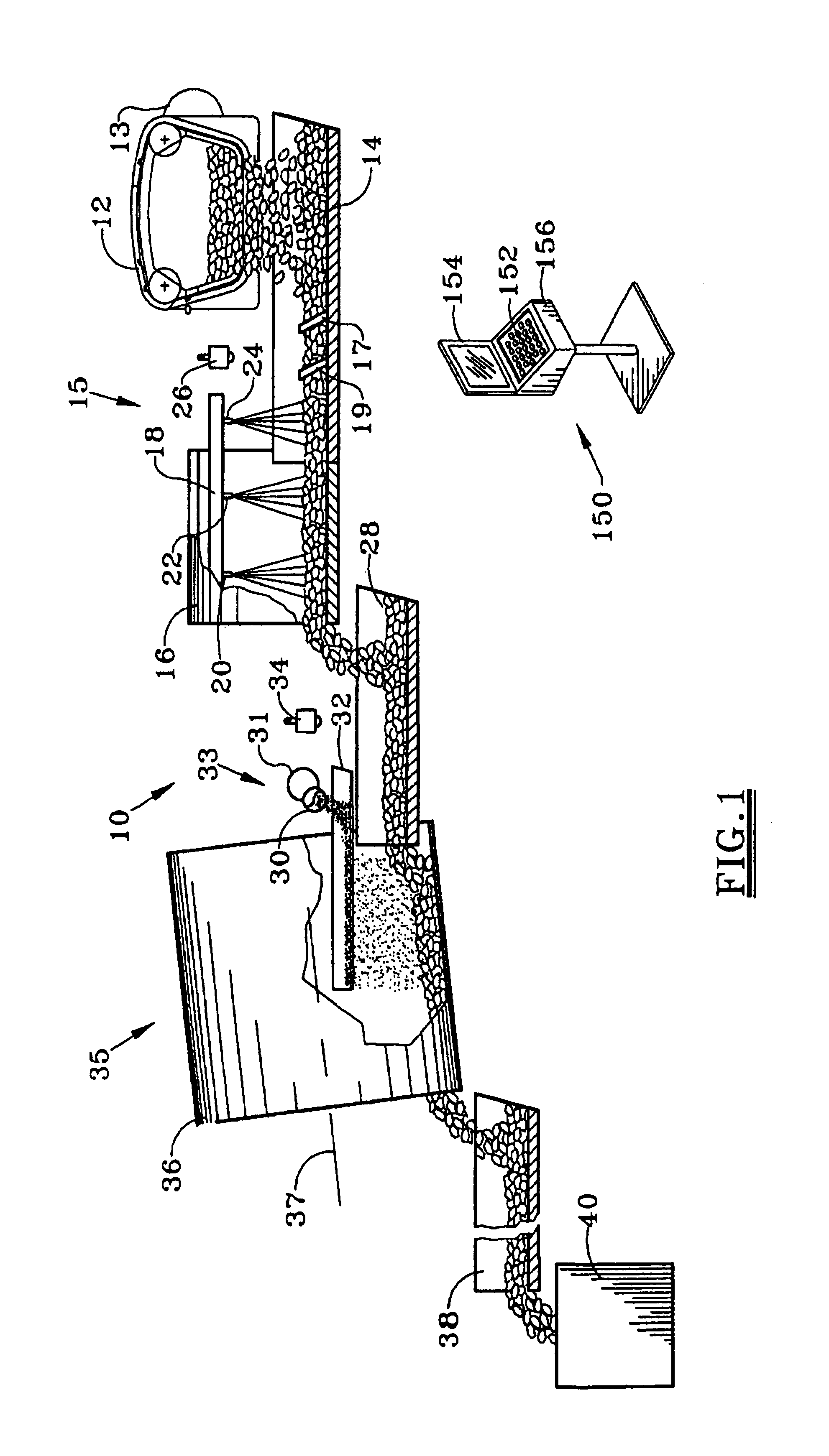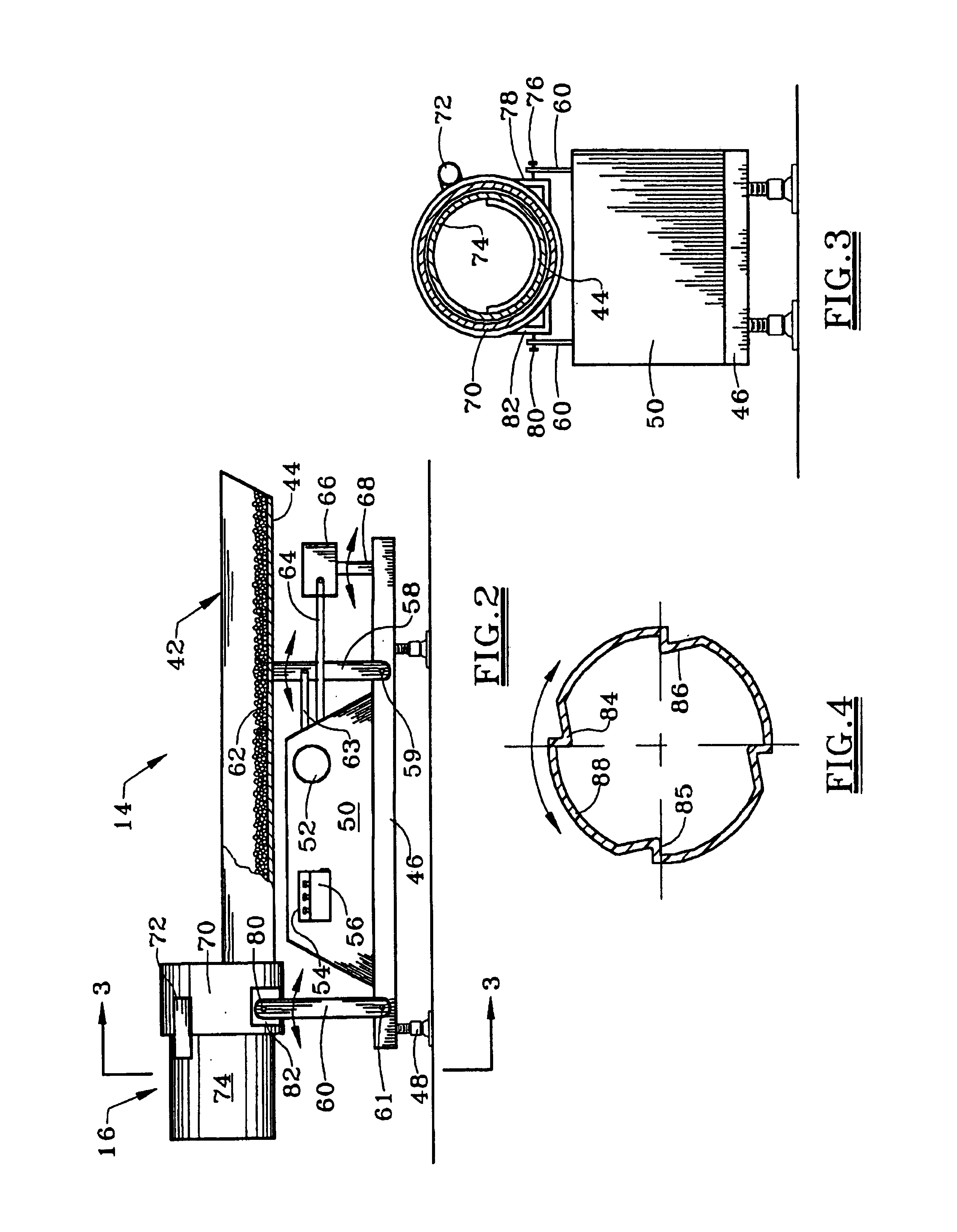Seasoning system and method
a technology of seasoning system and method, which is applied in the field of equipment and techniques for seasoning snack foods, can solve the problems of difficult to correctly use equipment, insufficient seasoning evenly distributed over the product area, and insufficient seasoning, etc., and achieves the effects of convenient and convenient use, improved seasoning coverage, and improved seasoning
- Summary
- Abstract
- Description
- Claims
- Application Information
AI Technical Summary
Benefits of technology
Problems solved by technology
Method used
Image
Examples
Embodiment Construction
[0044]As explained subsequently, FIGS. 1-5 disclose one embodiment of a system according to the present invention, and FIG. 6 discloses another embodiment of the present invention. The preferred seasoning distribution pan as shown in FIG. 7 may be used in either embodiment.
[0045]FIG. 1 simplistically depicts one seasoning system 10 of the present invention which is particularly well suited for food product seasoning applications wherein the product throughput is relatively high. Existing seasoning systems are capable of handling several thousand pounds of incoming food product per hour, and even higher product throughput rates for future equipment are likely.
[0046]The seasoning system 10 starts with product incoming to the seasoning system having the product flow rate regulated by a separate conveyor or a proportional gate such as the gate mechanism 12 generally shown in FIG. 1. Other proportional gate mechanisms or conventional gate mechanisms may be used to control the product flo...
PUM
 Login to View More
Login to View More Abstract
Description
Claims
Application Information
 Login to View More
Login to View More - R&D
- Intellectual Property
- Life Sciences
- Materials
- Tech Scout
- Unparalleled Data Quality
- Higher Quality Content
- 60% Fewer Hallucinations
Browse by: Latest US Patents, China's latest patents, Technical Efficacy Thesaurus, Application Domain, Technology Topic, Popular Technical Reports.
© 2025 PatSnap. All rights reserved.Legal|Privacy policy|Modern Slavery Act Transparency Statement|Sitemap|About US| Contact US: help@patsnap.com



